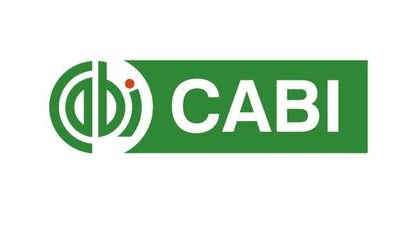DETERMINATION OF ASCORBIC ACID IN FRUIT JUICES
Keywords:
ascorbic acid, glassy carbon, electrochemistryAbstract
The present study has in attention the determination of ascorbic acid in beverages. This presents important interests as the amount of C vitamin content in certain food products, especially in beverages, has to be known by the consumers. Moreover, the food industry should not add more than 20% than the amount of vitamin C that is declared on the label. We propose an electrochemical method for the determination of ascorbic acid using the standard addition method. It was found that in most of the cases, the declared concentration of C vitamin is much lower than the ones found through electrochemical detection.References
Alwarthan, A.A. 1993. Determination of
ascorbic acid by flow injection with chemiluminescence detection, Analyst 118,
–642.
Baghizadeh, A., Karimi-Maleh, H., Khoshnama, Z., Hassankhani, A., Abbasghorbani, M. 2015. A voltammetric sensor for simultaneous determination of vitamin C and vitamin B6 in food samples using ZrO2 nanoparticle/ionic liquids carbon paste electrode, Food Anal. Methods 8, 549–
Bijad, M., Karimi-Maleh, H., Khalilzadeh, M.A. 2013. Application of ZnO/CNTs nanocomposite ionic liquid paste electrode as a sensitive voltammetric sensor for determination of ascorbic acid in food samples, Food Anal. Methods 6, 1639–1647.
Borut, P., Dušan, Š., and Milisav I., 2013. Achieving the Balance between ROS and Antioxidants: When to Use the Synthetic Antioxidants, Oxid.ative Medicine and Cellular Longevity, 1-11
Conley, J.M., Symes, S.J., Kindelberger, S.A., Richards, S.M., 2008. Rapid liquid chromatography–tandem mass spectrometry method for the determination of a broad mixture of pharmaceuticals in surface water, J. Chromatogr. A 1185, 206–215.
Dennison, D.B., Brawley, T.G., Hunter, G.L.,
Rapid high-performance liquid chromatographic determination of ascorbic acid and combined ascorbic acid-dehydroascorbic acid in beverages, J. Agric. Food Chem. 29,
–929.
Flora, S. J., 2009. Structural, chemical and biological aspects of antioxidants for strategies against metal and metalloid exposure. Oxidative Medicine and Cellular Longevity,
(4), 191–206.
Grudpan, K., Kamfoo, K., Jakmunee, J., 1999. Flow injection spectrophotometric or conductometric determination of ascorbic acid in a vitamin C tablet using permanganate or ammonia, Talanta, 49, 1023–1026.
Güçlü, K., Sözgen, K., Tütem, E., Özyürek, M., Apak, R., 2005. Spectrophotometric determination of ascorbic acid using copper (II)–neocuproine reagent in beverages and pharmaceuticals, Talanta, 65, 1226–1232. Johnson, O. R., Yetu, Abaya J., Oloruntoba, A. R., Samuel, S.. 2013. Effects of Nigerian Market Storage Conditions on Ascorbic Acid Contents of Selected Tetrapak Packaged Citrus Fruit Juice. Journal of Agricultural & Biological Science; 8 (2), 179.
Karimi-Maleh, H., Moazampour, M., Yoosefian, M., Sanati, A.L,. Tahernejad- Javazmi, F., Mahani, M. 2014. An electrochemical nanosensor for simultaneous voltammetric determination of ascorbic acid and sudan I in food samples, Food Anal. Methods, 7, 2169–2176.
KrajÄoviÄová-KudláÄková, M., Pauková, V., BaÄeková, M., DuÅ¡inská, M., 2004. Lipid Peroxidation in Relation to Vitamin C and Vitamin E Levels, Central European Journal of Public Health, 12(1), 46-48.
Lykkesfeldt, J., 2000. Determination of ascorbic acid and dehydroascorbic acid in biological samples by high-performance liquid chromatography using subtraction methods: reliable reduction with tris [2-carboxyethyl] phosphine hydrochloride, Anal. Biochem. 282 (2000) 89–93.
Naidu, K. A., 2003. Vitamin C in human health and disease is still a mystery? An overview, Nutrition Journal, 2(1), 7-16.
Pinto, J. T., Cooper, A. J. L., 2014. From Cholesterogenesis to Steroidogenesis: Role of Riboflavin and Flavoenzymes in the Biosynthesis of Vitamin D. Advances in Nutrition, 5(2), 144–163.
Ramalingum, N., Mahomoodally, M. F., 2014. The Therapeutic Potential of Medicinal Foods. Advances in Pharmacological Sciences,354264.
RodrÃguez-Comesana, M., GarcÃa-Falcón, M. S., & Simal-Gándara, J. 2002. Control of nutritional labels in beverages with added vitamins: Screening of b-carotene and ascorbic acid contents. Food Chemistry, 79, 141–144. Sun, W., Yang, M., Gao, R., Jiao K., 2007. Electrochemical determination of ascorbic acid in room temperature ionic liquid BPPF6 modified carbon paste electrode, Electroanalysis 19, 1597–1602.
Tabata, M., Morita, H., 1997. Spectrophotometric determination of a nanomolar amount of ascorbic acid using its catalytic effect on copper (II) porphyrin formation, Talanta, 44, 151–157.
Traber, M. G., Stevens, J. F., 2011. Vitamins C
and E: Beneficial effects from a mechanistic perspective. Free Radical Biology & Medicine,
(5), 1000–1013.
Wang, X., Wu, M., Tang, W., Zhu, Y., Wang, L., Wang, Q., He, P., Fang, Y., 2013. Simultaneous electrochemical determination of ascorbic acid, dopamine and uric acid using a palladium nanoparticle/graphene/chitosan modified electrode, J. Electroanal. Chem. 695,10–16.
Downloads
Published
Issue
Section
License
Please send the manuscript prepared with the MSWord Template, together with the Cover Letter to the editor-in-chief:
Dana Copolovici (e-mail: dana.copolovici@uav.ro)






